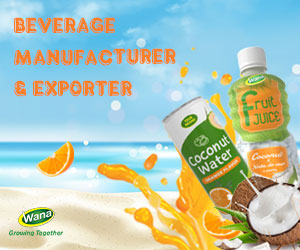Coffee and Tea are the two most consumed beverages worldwide, especially in Vietnam. With high mountainous terrain that is suitable for growing coffee and harvesting tea. Vietnam has become the world’s second largest coffee exporter and the largest tea exporter to Taiwan. Part 1 of Process of Coffee and Tea Manufacturing focuses on Coffee!

Process of Coffee and Tea Manufacturing >> Coffee Drink
Planting
The seeds are normally planted in large shaded beds. When they grow, the potted seedlings are shaded from the scorching sun and watered frequently. When they’re vigorous enough, they will be moved to their permanent growing place.
Harvesting the cherries
Depending on the variety, it will take approximately 3 to 4 years for the newly planted coffee trees to bear fruit. The fruit, called the coffee cherry, turns a bright, deep red when it is ripe and ready to be harvested.
Processing the cherries
Once the coffee has been picked, processing must begin as quickly as possible to prevent fruit spoilage. Depending on location and local resources, coffee is processed in one of two ways: The Dry Method & The Wet Method
Drying the beans
If the beans have been processed by the wet method, the pulped and fermented beans must now be dried to approximately 11% moisture. These beans can be sun-dried by spreading them on drying tables or floors. Or they can be machine-dried in large tumblers.
Milling the beans
Before being exported, parchment coffee is processed in the following manner: Hulling > Polishing > Grading & Sorting. Defective beans are removed either by hand or by machinery.
Exporting the beans
The milled beans, now referred to as green coffee, are loaded onto ships in either jute or sisal bags loaded in shipping containers, or bulk-shipped inside plastic-lined containers.
Tasting the coffee
Coffee is repeatedly tested for quality and taste. This process is referred to as cupping and usually takes place in a room specifically designed to facilitate the process.
Read More: Process of Coffee And Tea Manufacturing in Vietnam (Part 2)
Roasting the coffee
Roasting transforms green coffee into the aromatic brown beans that we purchase in our favorite stores or cafés. After roasting, the beans are immediately cooled either by air or water. Roasting is generally performed in the importing countries because freshly roasted beans must reach the consumer as quickly as possible.
- Grinding coffee
- The objective of a proper grind is to get the most flavor in a cup of coffee. How coarse or fine the coffee is ground depends on the brewing method.
- Brewing coffee
- Have a sip and enjoy!
Some Types of Private Label Coffee Drink
Coffee after being processed will be researched by the R&D department to produce drinks depending on the needs of customers. There are many Coffee and Tea Manufacturing Companies on the market, with WANA Beverage let’s take a look at what coffee drinks we have!
- Black Coffee
- Mocha
- Cappuccino
- Latte
- Espresso
- Milk
- Cold Brew
- Americano

What meaningful information about the coffee production process! To get you a delicious espresso in the morning, the farmers work hard to produce the best quality coffee beans. Look forward to part 2 of Process of Coffee and Tea Manufacturing to learn about the process of enjoying a cup of tea!
ASIA FOOD AND BEVERAGE COMPANY LIMITED (ASIA FOOD AND BEVERAGE CO.,LTD)
- Hotline : (+84) 93 575 0088
- Phone : (+84) 93 575 0088
- Email : inquiry@asiafnb.com
- Add : 10/9 Vo Thi Sau Street, Tay A Town, Dong Hoa Ward, Di An District, Binh Duong Province.
- Alibaba


